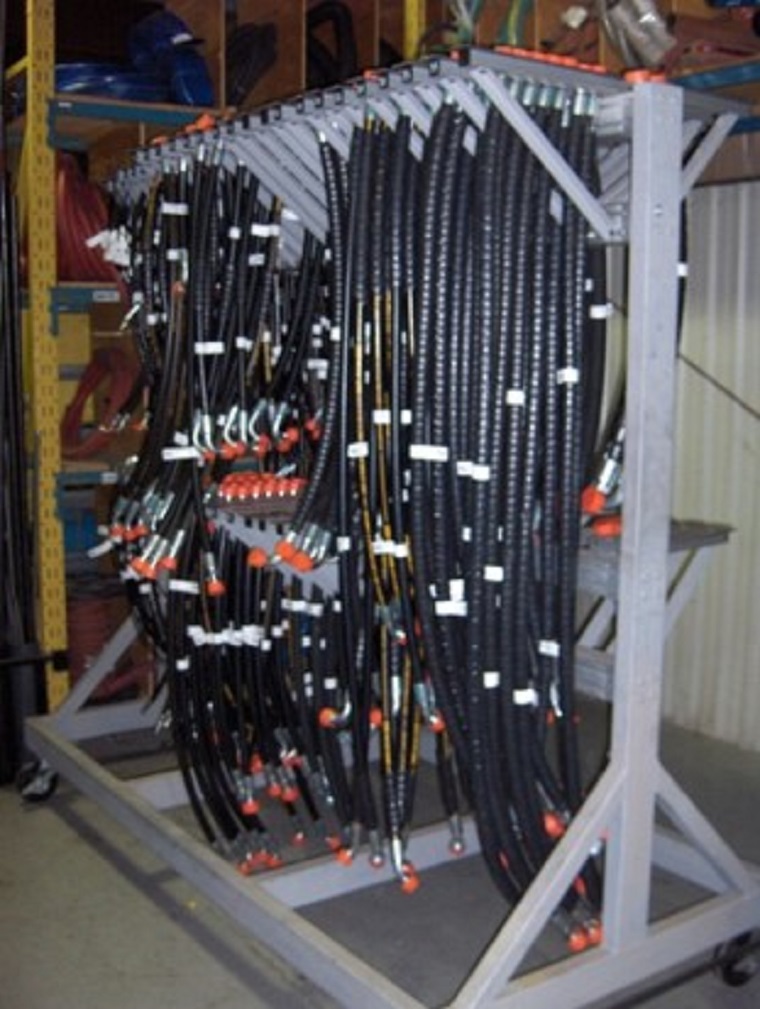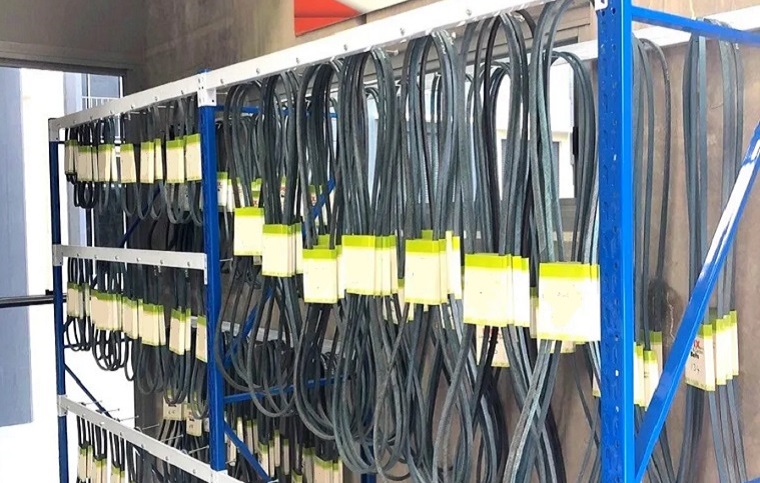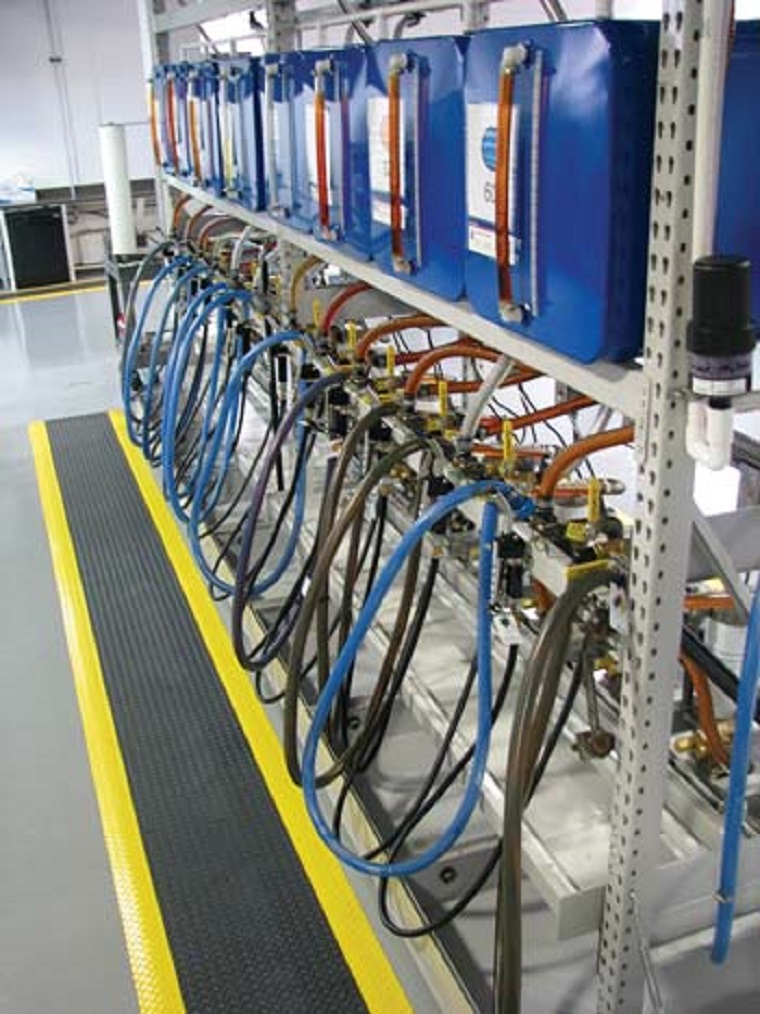Industry
Mastering Material Control: The Crucial Role of Freestanding Hose Storage Racks
Storing, accounting for, and maintaining control of high-value hydraulic and pneumatic hoses is a logistical nightmare for plant operators, and maintenance and facility managers. Depending on the type of activity a business performs, hundreds of different hoses may need to be kept on hand at all times simply to maintain its operation, and even a momentary loss of accountability can be costly.
A misplaced or misidentified hose is more than an inconvenience; if your business needs to immediately replace a ruptured hose with a missing plant critical spare, it can have incalculable ramifications even for your downstream business partners. That’s why you need the whole story on the importance of maintaining positive control over these high-value spare parts, as well as some insight into what kinds of storage systems are available to help you do it.
Freestanding Racks Let You Take Control of Your Company’s Hose Storage Dilemma

It’s a fact: Although you’d probably be hard-pressed to find an industrial or commercial activity that doesn’t use hoses, you might be even harder-pressed to find one that has centralized control over its hose inventory. Hoses are worth infinitely more than their acquisition price, which is why using freestanding hose storage racks to maintain control and accountability over them just makes good business sense.
Let’s be honest: there’s a big difference between having a solid inventory of spare hoses, and having control over that inventory. And when the failure of a single, hundred dollar high-pressure hose on an assembly line can potentially cost tens of thousands of dollars of lost production per hour, businesses can’t afford to not know precisely where their inventory is.
By utilizing a centralized hose storage rack system, businesses are able to:
- Quickly and accurately account for their full complement of high-value hoses and critical spares from one primary location;
- Fully sort and separate their hoses according to their preferred accountability criteria; and,
- Prevent inventoried hoses from degrading, or being damaged or destroyed as a result of inadequate storage practices.
With a freestanding hose storage system, your business never needs to worry about over-purchasing expensive spare hoses, or losing accountability of them after they’ve been delivered. They’re a straightforward solution that benefits everyone.
Innovative Configurations for Storing Hoses and V-Belts Anywhere

Freestanding hose racks are manufactured in both stationary configurations using sturdy long-span construction. This slotted, scalable framework, along with its innovative sliding module system, is designed to suspend up to 200 hoses loosely from non-destructive, rubber loop lanyards. It’s an innovative hanging storage approach that prevents expensive hoses from becoming kinked, crushed, or possibly even contaminated if stored incorrectly.
At a standard height of 2.3m, and with a choice of rack lengths of 2.3m and 2.5m, these adjustable freestanding systems feature:
- 6 sliding modules with 8 lanyards per module;
- A heavy-duty powder-coated finish; and,
- Zinc-plated end frame supports.
Ideally, freestanding racks can be used in conjunction with other long-span racking systems, or arranged to work around irregularly shaped, or oversized items. They even come in a range of alternate configurations, including:
- Mobile racking. Instead of floor mounts, mobile configurations come with a heavy-duty galvanized grated deck, heavy-duty casters, and fork pockets, and can be rapidly positioned near production lines, or on shop floors whenever they’re needed.
- Pallet racking. These ultimate space-saving configurations are designed to hang hoses inside standard Australian pallet racking, while still allowing pallets to continue to use the beams above them.
- V-belt racking. Instead of lanyards for hoses, V-belt configurations utilize hooks to safely store any type of transmission belt that would ordinarily be used on drive pulleys, compressors, or conveyors.
With freestanding hose storage shelving installed, there’s never any confusion about where these critical high-value items are, or how many of them you have.
Hose Racks Can Change the Perception of Accountability
While it’s important to understand the operational advantages of freestanding racks, it’s no surprise that the most direct impact that accountability for high-value hoses will have is going to be on staff and personnel. By implementing a material control policy that reinforces the human component of high-value accountability, businesses can expect to see the following with the installation of hose storage racks.
- Improved material visibility. With hose storage racks, maintenance, logistics, procurement, and operations personnel all have full visibility to the spare parts inventory that’s on hand, as well as the thresholds on when more needs to be ordered.
- Improved employee productivity. Improved spare parts visibility means that when a hose needs to be replaced, maintenance personnel won’t lose precious operational time trying to locate the replacement.
- Improved employee safety. By improving staff awareness of precisely which critical spares are on hand, it reduces the risk of worn or aged hoses being used beyond their lifespan, or of incorrect or defective hoses being pressed dangerously into service.
Hose racks allow businesses to effectively rein in their material control practices, as well as increase staff receptiveness to material control. It’s a win-win proposition that helps businesses at multiple levels.
Use Hose Racks to Improve Your Hose Procurement Practices

One of the most prominent aspects of long-span-based racking and storage systems is that when managed property, they have the ability to tie multiple material management activities together, both inside and outside the company. Businesses are able to leverage the fixed-quantity controls that long-span-based systems promote across multiple cost centres and activities, and it can be done with freestanding hose racks too.
With fixed volumes at the heart of the system, freestanding hose rack requirements are fully capable of:
- Isolating and eliminating costly acquisitions of excessive, or poorly manufactured hoses;
- Expanding “first in/first out” inventory practices to include spare parts; and,
- Identifying, and immediately removing inventory that’s exceeded its intended shelf life.
With freestanding racks, you’re able to fully assess where the inefficiencies are in your high-value hose procurement, retention, and utilization procedures. And once you’ve addressed them, your racking system will ensure that they’re gone for good.
The Final Word
At the end of the day, from the moment they’re procured, high-value hoses need to be controlled. They’re plant-critical spares, and allowing them to get damaged or misplaced can have catastrophic consequences if they urgently need to be brought into service.
Freestanding hose storage racks and a positive material control policy are the best ways to eliminate the costly loss of oversight and control of these crucial spares. They’re scalable, and effective, and they simplify the task of staying in control of your inventory.











